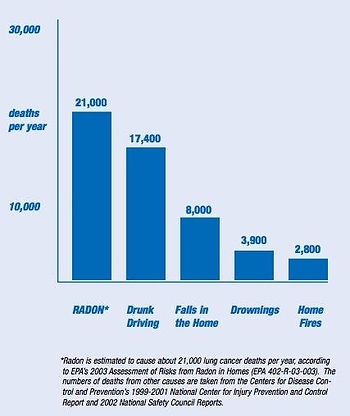Radon is a dangerous, radioactive gas can occur naturally in the soil in certain areas.
It is created by the breakdown of uranium that may exist in the ground, forming a gas that can easily seep into the air in homes and buildings, and dissolve into underground water sources such as local NJ wells, and accumulate there.
The gas can then be released when you use the water, whether for showering, washing dishes, or some other purpose, and can also be consumed when you drink it. It is strongly recommended that you have private well water analyzed for radon.

